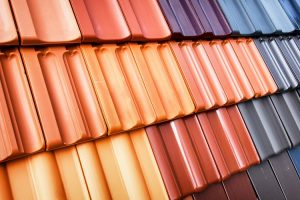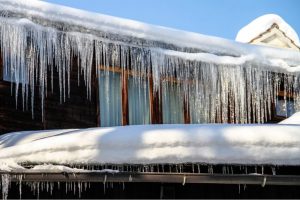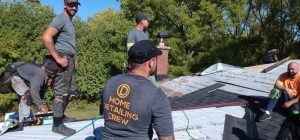Choosing the Right Siding for Your Home
Feb 24, 2023

When you see a house for the first time, whether you’re merely passing down a street or purposely scoping out a new place to live, the first thing you’ll most likely notice is the yard (if there is one), and the siding. A house’s siding is the equivalent of a person’s clothes, and if you’re in the market to do some exterior home renovations, you’ll probably want an idea of the kinds of options you have before you even step foot into a showroom.
Assessing Your Siding Needs
The first thing you should do is to carry out an assessment. Two obvious considerations are your budget and the aesthetic you’re going for. Resale value may also be a consideration – if your home lacks curb appeal for whatever reason, you may not get as big a bang for your buck in the long run.
However, there are other things you must think about before picking out the right siding for your home. For instance, you’ll have to do some research when it comes to local fire and safety codes, in addition to getting an idea of regional trends. This is because some materials may not be legally available in your area. Other materials may simply not be easily purchased. Furthermore, when it comes to installing more particular types of siding, you’ll have to find contractors with the right skills, and they may be few and far in between if a particular style is not in vogue in your region.
You’ll also have to think about your region’s climate, and your own willingness to put in regular maintenance. Some materials are not suited to very rainy areas, whereas others may be vulnerable to cold regions that undergo frequent freeze-thaw cycles. While some materials may naturally require more maintenance than others, using the wrong material for a given climate will certainly add to your expenses and to your list of chores.
It’s equally important to consider if you want to go the DIY route when it comes to installation. If so, some materials may be out of the question, as they will require you to hire roofing contractors and other professionals to do the job.
Siding Layout Options
Horizontal Lap Siding
In term of layout, horizontal lap siding is one of the most popular designs found in North American homes. This is the kind of look you’ll find in colonial or traditional North American homes, such as those done in the Cape Cod style. It’s a boxy symmetrical look that can be very elegant. You can get the look in any colour you like, using an array of siding materials, including wood, aluminum, vinyl and fiber cement. Naturally, the cost varies depending on the material.
Board and Batten
The board and batten look is another timeless style used in traditional North American homes. Its evocative of a rural setting, and this is what you might envision when somebody mentions a classic red barn or farm. You can get the look done in wood and fiber cement, but unfortunately this style is no longer the cheapest option, given the popularity of horizontal lap siding.
You can, however combine the two styles if you so choose, and it’ll still give your home a classic, traditional look. Furthermore, both horizontal lap siding and the board and batten look can be done using other materials to mimic the look of wood, though this will cost more money and would require professional installation done by a roofing company.
Shingles
Shingles can give your home an Arts and Crafts vibe, and may even bring up the image of an English cottage. This isn’t the most budget-friendly style, however, and will cost you slightly more than horizontal lap siding. You can have this look done using vinyl, wood or fiber cement. The prices will vary, and wood shingles may not be appropriate for every region depending on local fire and safety codes.
Wood Strip Siding
Using wood in flat horizontal “strips” can give your home a modern look, but you’ll have to be prepared to also install a continuous waterproof membrane along with it. If you don’t, you’ll soon find the inside of your house riddled with water damage. Regardless, it is one of the pricier siding options, and installation would be best left to a roofing company of your choice.
Top Siding Materials
The styles mentioned above can generally be had using a different range of materials to suit many regional climates, personal tastes and budgets. The most popular option by far is vinyl, followed by genuine fired clay brick. Also available are stucco plaster, fiber cement, stone and stone veneer, wood and even metal.
Vinyl
Vinyl siding has skyrocketed in popularity over the last few decades due to its appealing price, lifespan, ease of installation and ease of maintenance. Indeed, it’s rather popular amongst the DIY crowd. You can also get it in many styles and colours, such as hardboard (easily installed, low cost but less durable) or foam siding (offers good insulation but susceptible to damage from hail, flying debris and strong winds). Often, vinyl comes in different finishes mimicking other more expensive materials, More recently, you can buy it insulated or with UV protection and other coatings for a longer lifespan. It costs about $200 per 100 square feet on average, which makes it the most affordable siding material out there.
Brick
Bricks have been in use for many eons, and has been the star of many a North American home. In fact, it still reigns as the most popular siding material in the Southern States, and with good reason. Genuine fired clay bricks keep their vibrant colour without fading, and many studies have shown that they beat out competing materials when it comes to surviving anything from fire, wind, rain, debris and even earthquakes. They’re also great at muffling sound, are ecologically friendly, and the bricks themselves are pretty much low maintenance as they don’t mould, rot and can’t be eaten by termites. That said, it’s one of the priciest siding options, averaging at over $900 per 100 square feet.
Wood
The use of wood has declined sharply in the three decades when it comes to picking out a choice of siding material. You’ll find it is still used by upscale architects and builders, but otherwise, it is not the average homeowner’s number one pick. Beyond its high cost (about $550 per 100 square feet), wood is a high-maintenance material and may not even be legal in some regions. That said, you can get it in many different styles, whether in clapboards, “strips” shakes or shingles. It also offers time-tested curb appeal, and offers a classic look that can’t be denied. You can get it to last anywhere from 10 to 100 years with very good care, which means washing, staining and sealing it whenever you notice it starts to fade, stain or grow mold/mildew. However, the use of wood may not even be legal in some areas, so you’ll have to check local restrictions and consult your roofing contractor for more information on regional pros and cons.
Stucco
The classic white stucco look will immediately bring to mind Spanish-mission style homes, ranches and Mediterranean houses on a cliff by the sea. Stucco is applied in three coats and is sturdy enough to endure all types of weather, so long as it is unpainted. However, it is best suited to regions with normal to low levels of precipitation, as the framing may rot if the house is perpetually exposed to moisture. Stucco can be applied on most surfaces, inside or out, and requires minimal maintenance once dried and finished, with an average lifespan of 50 to 80 years. It is neither the cheapest nor most expensive material you could pick, however you’ll have to also take labour costs into account and it is best to get a quote from your roofing company before you decide to take on this option.
Fiber Cement
Fiber cement is growing in popularity recently, and with good reason. While its composition may depend on the brand, in general, fiber cement is a durable material that is very resistant to fire, rot, salt, UV rays and termites. As such, its lifespan is about 50 years. It’s also generally low-maintenance, though you’ll have to refinish it once every 15 years or so. You can get it many different styles and colours, and like vinyl it is often used to mimic other pricier siding materials such as wood, brick and stone. It’s only slightly more expensive than vinyl, with an average cost of $300 per 100 square feet.
Stone and Stone Veneer
Stones like granite and limestone have been used for many years to build homes, and they offer both durability and eye candy. However, natural stones come with one of the bigger price tags, and many homeowners have turned to stone veneer in recent years to get the look without the cost. Stone veneer siding comes in many styles, and can be made of many different materials, both natural and synthetic. It also weighs less than stones, which means installation is less of a hassle. However, as it is essentially made of concrete, it is less durable than true stone.
Metal
The use of metal for siding is not really the most popular option, but for those of you concerned more with aesthetic than anything, it is the perfect option for a cool contemporary feel. You can get your siding in different metals, including copper and corrugated steel. It is also durable and relatively low maintenance. However, finding the right materials and a roofing contractor who offers this installation option may be difficult. You’ll have to make some phone calls and drop by a few showrooms before you get your heart set on metal siding for your home.
If you have any questions about siding please don’t hesitate to call us at (905) 387-3000 or contact us using the contact form on our website. We’d love to hear from you!





